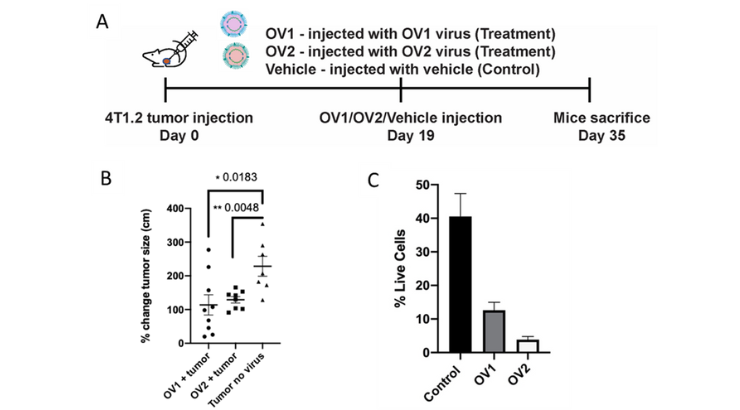Novel Oncolytic Virus Based Cancer Therapy
ID# 2019-4999
Technology Summary
Members of the family Birnaviridae namely genus aquabirnavirus including Infectious Pancreatic Necrosis virus (IPNV) found in cold water fish, and genus avibirnavirus, including Infectious Bursal Disease virus (IBDV) found in poultry, are well-known and well-characterized viruses that are non-pathogenic to humans. IBDV and IPNV do not replicate productively within, or induce cell death of, non-cancerous human or mammalian cells.
Penn State inventors discovered that IBDV (or “OV1”) and IPNV (or “OV2”) can infect a range of human cancer cells, replicate, and induce apoptotic cell death. In vitro, OV1 and OV2 have demonstrated oncotoxicity, including activation of apoptosis, in a range of human cancers including human lung carcinoma, renal cell adenocarcinoma, pancreatic adenocarcinoma, mammary ductal carcinoma, and lymphoma. In addition, the double-stranded RNA genomes of IPNV and IBDV stimulate the immune system, so the immune cells attack and destroy cancer. Therefore, they serve as double-pronged attack on cancer.
Application & Market Utility
OV1 and OV2 have additionally demonstrated oncotoxicity in canine mammary carcinoma cells, suggesting that these oncolytic viruses will have therapeutic application in both companion animals and humans. The researchers have generated genetically modified OV1 and OV2 OV1 with enhanced oncotoxicity and carry therapeutic payload genes. Using a murine breast cancer model (4T1.2), the researchers demonstrated anti-tumor activities of OV1 and OV2.
Next Steps
Research is ongoing. Penn State researchers are working with collaborators to optimize the dose and delivery and the choice of therapeutic payloads to optimize anti-cancer efficacy of OV1 and OV2 in vivo in mouse models. Penn State seeks partners to advance treatment for indications in both human and animal health.

